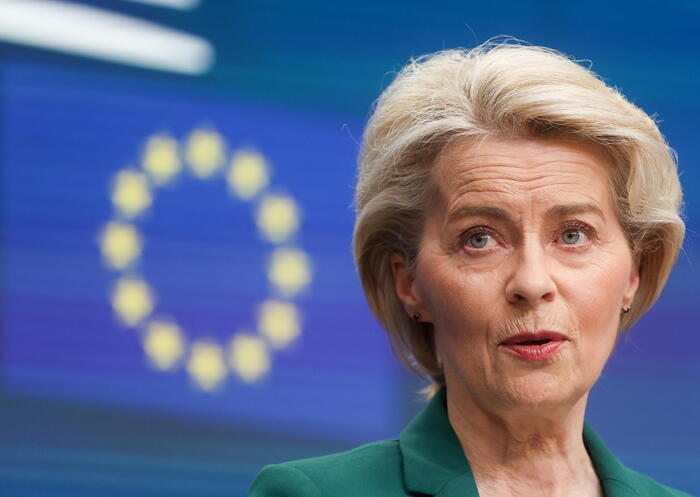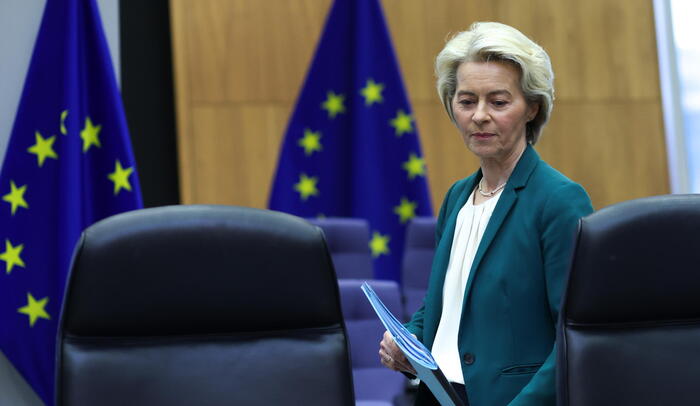The ways of destiny, like those of the Lord, are inscrutable. And, in addition, they are capricious and do not necessarily pass through the center. A Polish city with a convoluted name for a Spanish speaker, Gdansk (pronounce "guedañisq"), lost in the north of the country, on the shores of the Baltic Sea, with few ballots to have been decisive for its geographical position, unwittingly became the beginning of the two great events of the twentieth century that forever changed the history and the map of Europe. As Poles like to say, this is where it all started.
But let's go to the beginning. Gdansk is a beautiful port city that grew in the seventeenth and eighteenth centuries thanks to the grain and amber trade and its membership in the Hanseatic League, a kind of commercial club of Baltic port cities. It is estimated that a third of all the rye consumed in the Old Continent passed through its port. Local merchants, Germans, Scots, Scandinavians and Dutch built magnificent houses in Hanseatic style, with very narrow facades, elongated bottom and richly ornamented gables, as used to be usual in this area of Europe because taxes were paid per meter of façade.
More informationDiscovering paradises in Portugal: Óbidos, Peniche, Nazaré and the unknown Berlengas Islands
The result of those centuries of splendor is today a postcard historic center. One of the most beautiful medieval, Gothic and Renaissance cities in Europe. Overshadowed for the tourist market by the fame of neighboring Krakow. "This is because during World War II Krakow was hardly damaged, while Gdansk, which was a strategic port, was devastated by bombing," Ewa Stępińska, the guide accompanying me, tells me. "It was decided to rebuild the city as it was, but the process was very long, think that in the seventies there were still entire neighborhoods in ruins. That's why tourism came to Krakow earlier than to Gdansk."
Today, strolling along Ulica Długa, Long Street, the name of the main avenue of the historic center that also serves as the Main Square (curiously, in old Gdansk there are no squares as we conceive them), leaving through the Golden Gate or the Green Gate to the Motława River Canal – always full of terraces and good atmosphere – or wandering through its many pedestrian streets is a delight for the traveler. This is wrapped in a charming urbanism (reconstructed, but charming) of pastel-colored houses on which two buildings stand out: the largest medieval wooden crane that is preserved in Europe and the second largest church built in brick in the entire continent, the co-cathedral of Santa Maria.
That said, let's get back to the story. The first major event that began in Gdansk was none other than World War II. To summarize, the Treaty of Versailles that put an end to the Great War (1914-1918) established the borders of a new Europe resulting from the conflict. These included a free and independent Poland that would include Gdansk. But reality prevailed: after centuries of occupation by Prussia first and Imperial Germany, 80% of the population of Gdansk was German and only 15% Polish. So a Solomonic solution was adopted (and wrong, as would be seen soon after). Gdansk became a Free City or semi-autonomous state managed by the League of Nations, reserving a corridor around it for the newly independent Poland to have an outlet to the sea. A solution that did not satisfy either one, but much less Hitler, who with the excuse of recovering Gdansk began on September 1, 1939 the invasion of Poland that would lead to the greatest carnage in history: a world war in which between 40 and 50 million people would die.
The second historical fact that has this Polish port city as its origin and that would change the map of Europe again has to do with this metal door that you see in the photo below.
Gate number 2 of the Lenin shipyards in Gdansk. Paco Nadal
Do you recognize it? It appeared in the news and in the news of the eighties one day and another too. It is gate number 2 of the Lenin shipyards in Gdansk, where workers led by a certain Lech Walesa stood up to the Polish communist government. After decades of strikes and social protests always violently repressed by the communist dictatorship, on August 14, 1980, the Lenin shipyard in Gdansk went on strike. To avoid another massacre like the one in 1970, when workers leaving the shipyards were massacred by the police, Walesa and the rest of the leaders decided to lock themselves in the shipyards and go on an occupation strike. They were turbulent and complex days, but the outbreak of demands here provoked an avalanche of solidarity in the rest of the large Polish state companies, shipyards and ports that paralyzed the country.
The strikers of the Lenin shipyards drew up 21 demands, which they put on a table and which have made history. Basically, they called for the establishment of trade unions independent of political power, the abolition of censorship, the recognition of the right to strike, the elimination of repression by political conditions and the release of political prisoners.
All this is explained in detail by thousands of documents, photographs and objects (among them, the famous table of the 21 demands) in the European Center of Solidarnosc, the very modern museum and research center built on the sites of the old shipyard and which is focused on remembering the history of that August 1980, the creation of the Solidarnosc (Solidarity) union and the period of martial law that followed. The museum opened in 2012 and is the work of four Polish architects, who conceived it as a large corten steel structure, whose oxidation and color is reminiscent of the ships that were formerly built here. The funds came from the European Union and the Gdansk City Council. It is an essential visit to know the city and the recent history of Europe.
European Centre of Solidarnosc, the modern museum and research centre built on the sites of the former Gdansk shipyard.Ida Plaza
In the access square, next to gate number 2, stands the monument of the Three Crosses, dedicated to those killed by the repression of the strikes of 1970. Although the central building of the museum is newly built, the old Occupational Health and Safety Room of the shipyard has been preserved, because in it the negotiations of the strikers with the government commission took place and in it the historic agreements of August 31, 1980 were signed. The elongated table and part of the props are preserved; On the right, a large black and white photo documents the historic moment. It shows a very young Lech Walesa signing the August Accords with a huge toy pen with the image of Pope John Paul II; at his side, a circumspect Mieczyslaw Jagielski, Polish Communist Deputy Prime Minister, with a face of not being very convinced that the government he represented had any intention of respecting the agreements, as it did.
Photo of the signing of the historic Gdansk Agreements, on August 31, 1980, between Lech Walesa, leader of the Solidarity trade union, and Polish Communist Deputy Prime Minister Mieczyslaw Jagielski (left). Marc BULKA (Gamma-Rapho via Getty Images)
In the main building, multimedia exhibitions with films, documents and photographs of the time, songs of the strikes, original recordings of the negotiations and other elements lead the visitor through various rooms in which the hardships, lack of freedom and repression of the communist era and the democratic struggle of the Poles for freedom are also remembered, whose recovery was neither easy nor immediate. After the signing of the August accords came 16 months of martial law in which the Soviet Union's puppet government tried to return to the old regime. But it was already impossible. Poles' desire for a new order also permeated other countries of the Iron Curtain, especially after the publication of the manifesto Message to the nations of Eastern Europe, promulgated during the national congress of Solidarnosc gathered at the Oliwia gymnasium in Gdansk in September 1981.
The rest of the story is known: in 1989, with Mikhail Gorbachev in power, the Soviet Union implodes and the Iron Curtain falls. All analysts agree that Gdansk and the Lenin shipyards were the first domino that began to fall on August 31, 1980 and ended with the fall of communism.
Sopot Beach, on the Polish coast of the Baltic Sea.Paco Nadal
Gdansk is tiny and you can see it in a day. But around there are other places of interest. Like Sopot, the Baltic spa town with huge beaches, nineteenth-century hotels and the largest wooden pier in Europe: 515 meters. 45 minutes away, on a tributary of the Vistula, stands the gigantic Malbork Castle, the largest fortress in the world built in brick. And with a couple of hours of driving you reach the Hel peninsula, a stretch of sand 35 kilometers long by just 100 meters wide in its narrowest part, with endless pine forests and sand, where Poles go for summer and eat in its famous restaurants. The perfect end to a trip to an almost unknown city through which, however, the most recent history of the European continent circulated.
Malbork Castle, the largest fortress in the world built in brick. Paco Nadal
You can follow Paco Nadal also on Spotify, Instagram, TikTok, YouTube and Twitter. And listen to him every Friday, at 19.00, with Carles Francino in La Ventana, from Cadena SER.
Subscribe here to the El Viajero newsletter and find inspiration for your next trips on our Facebook, Twitter and Instagram accounts.

/cloudfront-eu-central-1.images.arcpublishing.com/prisa/MTPLWDQVOZF2PLFQSLSNE6GHEU.JPG)







